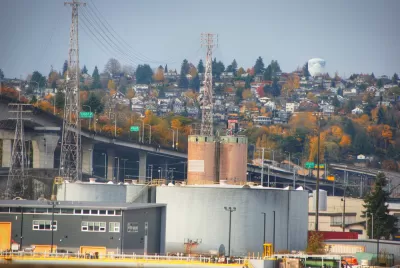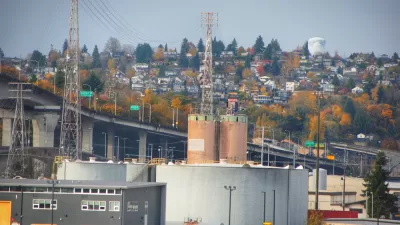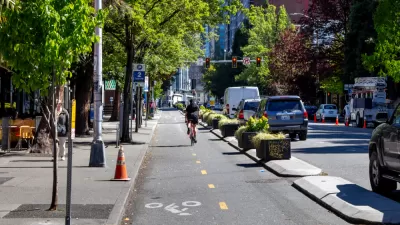The West Seattle High-Rise Bridge Safety Project is in high gear, more than six months after the city's most heavily trafficked bridge was closed suddenly for safety risks.

Seattle Mayor Jenny Durkan has announced a position on one of the big questions hanging over Seattle: What to do about the West Seattle Bridge more than six months after being closed when quickly growing cracks were discovered in the bridge in March 2020. The Seattle Department of Transportation (SDOT) spent most of the year trying figure out how to prolong the life of the West Seattle High Bridge—or give up and replace the bridge entirely.
Mayor Durkan today announced a preference for the replace option, according to an article by Mike Lindblom. Now, the "Seattle Department of Transportation (SDOT) will go ahead with a 'type, size and location' study for a replacement structure," reports Lindblom. "That study will likely include not only bridge concepts but a shallow immersed-tube tunnel..." The tunnel concept was initially part of the discussion as a replacement for the bridge's 125,000 daily trips.
Shaun Kuo has been following the progress of SDOT over the past few months, as it laid out six options to "shore, repair, or replace" the bridge, as well as a Cost-Benefit Analysis (CBA) performed by WSP. The CBA reduced the number of viable options by one, but doesn't provide a recommendation for how the SDOT should proceed.
Kuo offers detailed insight in the Cost-Benefit Analysis, and concludes by offering an indication of which direction SDOT might be headed for the future of the bridge:
While further study is desired and some West Seattleites demand the option with the quickest reopening of the West Seattle Bridge, city staff are reportedly leaning toward replace with the entertainment of rapid replace. With future compatibility with light rail in mind, The Urbanist has come out in favor of replacement.
Obviously, Kuo's insight is proven prescient by Mayor Durkan's announcement today.
FULL STORY: West Seattle Bridge Cost-Benefit Analysis Leaves Lingering Questions

Planetizen Federal Action Tracker
A weekly monitor of how Trump’s orders and actions are impacting planners and planning in America.

Map: Where Senate Republicans Want to Sell Your Public Lands
For public land advocates, the Senate Republicans’ proposal to sell millions of acres of public land in the West is “the biggest fight of their careers.”

Restaurant Patios Were a Pandemic Win — Why Were They so Hard to Keep?
Social distancing requirements and changes in travel patterns prompted cities to pilot new uses for street and sidewalk space. Then it got complicated.

Platform Pilsner: Vancouver Transit Agency Releases... a Beer?
TransLink will receive a portion of every sale of the four-pack.

Toronto Weighs Cheaper Transit, Parking Hikes for Major Events
Special event rates would take effect during large festivals, sports games and concerts to ‘discourage driving, manage congestion and free up space for transit.”

Berlin to Consider Car-Free Zone Larger Than Manhattan
The area bound by the 22-mile Ringbahn would still allow 12 uses of a private automobile per year per person, and several other exemptions.
Urban Design for Planners 1: Software Tools
This six-course series explores essential urban design concepts using open source software and equips planners with the tools they need to participate fully in the urban design process.
Planning for Universal Design
Learn the tools for implementing Universal Design in planning regulations.
Heyer Gruel & Associates PA
JM Goldson LLC
Custer County Colorado
City of Camden Redevelopment Agency
City of Astoria
Transportation Research & Education Center (TREC) at Portland State University
Camden Redevelopment Agency
City of Claremont
Municipality of Princeton (NJ)





























